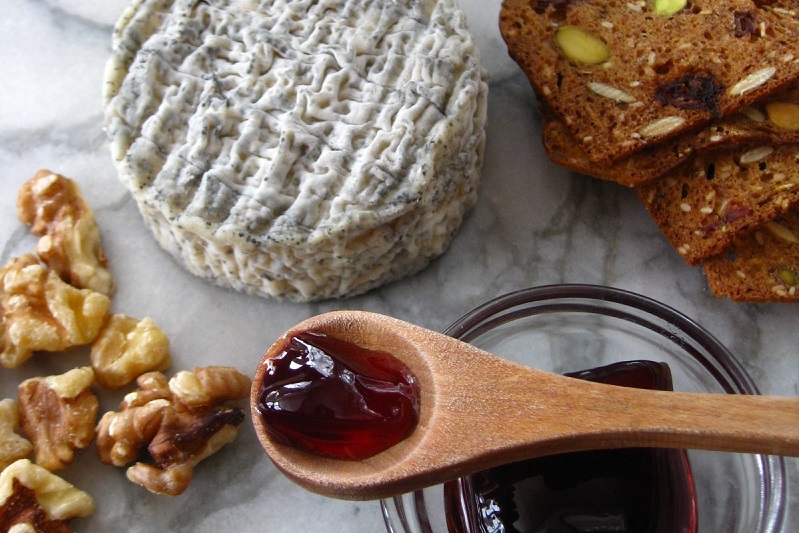Even though it’s exactly what it sounds like, your brain may need a moment to decipher that beer jelly is, in fact, spreadable goodness made primarily from beer. The foodstuff tastes unmistakably like the beer used, but the alcohol itself cooks off, so you won’t get buzzed off your charcuterie.
Craft beer enthusiasts and former archaeologists Nancy and Walter Warner, 35 and 44, stumbled upon beer jelly one fateful Vermont winter in 2011. They were overrun with Sierra Nevada and short on fresh fruits. Nancy, relatively new to canning (jelly and jam making) got adventurous, experimenting with wine, coffee, and their “excess” beer.

In 2012, Potlicker Kitchen would take form as a hub where the couple began to sell wine and beer jelly, in addition to more traditional jams. Since then, Potlicker’s grown to a six-person team selling 1,000-3,000 jars a week. Their most popular beer jelly is their India Pale Ale, which Nancy attributes to the beer variety’s general popularity.
“I’ve always thought of them as more of a cooking condiment,” Nancy remarked, eschewing the notion beer jelly is exclusively for breakfast. “[It’s] something that I might put on my roasted meats or cheese platters.”
The couple has a whole list of recommendations, pairings, and recipes if you’re having trouble thinking outside of the jar. You can take these jellies in a sweet direction or carve your own path with more savory options. Their best-selling IPA tends to favor salty foods like pretzels and pepperoni.

For the more industrious jelly-lovers out there or if you’re simply particular about your craft beer, you can make you own beer jelly thanks to Caroline Radice. Spookily, the same winter as the Warners, the Californian farmer and chef of Black Dog Farm had the idea to make a stout jelly. Given the popularity of Radice’s post about this experiment, she updated the recipe four years later, recommending darker beers.
Stout Beer Jelly
(Caroline Radice, Black Dog Farm, Redwood Valley, CA)
- 3 12 oz bottles of stout beer
- 1 package Sure-Jell low-sugar pectin
- 2 1/2 cups sugar
- 1/4 cups apple cider vinegar
Method: Bring boiling water canner up to a boil and prepare jars and lids. Put the beer and vinegar into a very large pot. (It will froth up much, more than you can imagine.) In a small bowl, mix together 1/2 cup of sugar and the package of powdered pectin. Stir it into the beer and bring the mixture up to a boil. Once it’s boiling, add 2 cups of sugar and return to a boil. Cook it at a rolling boil for 1 minute and then remove from heat. Ladle hot jam into hot, sterilized jars leaving 1/4″ headspace. Wipe rims and attach lids, and then process in a boiling water bath for 10 minutes. Adjust for altitude as necessary.


